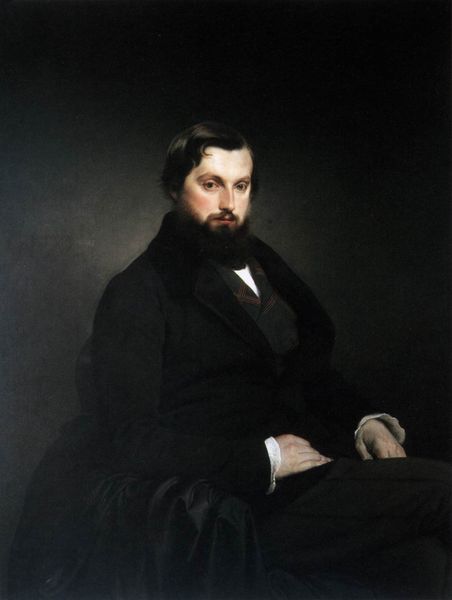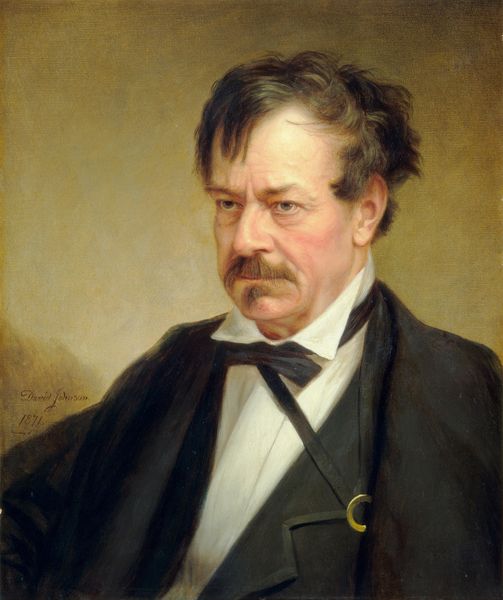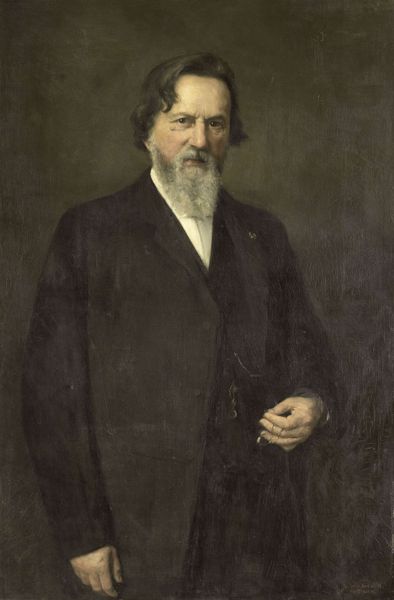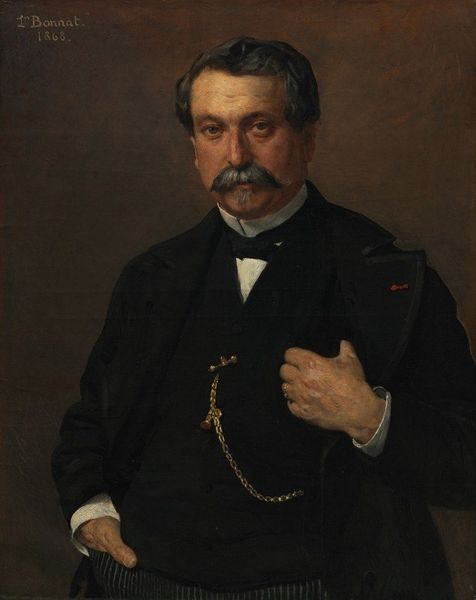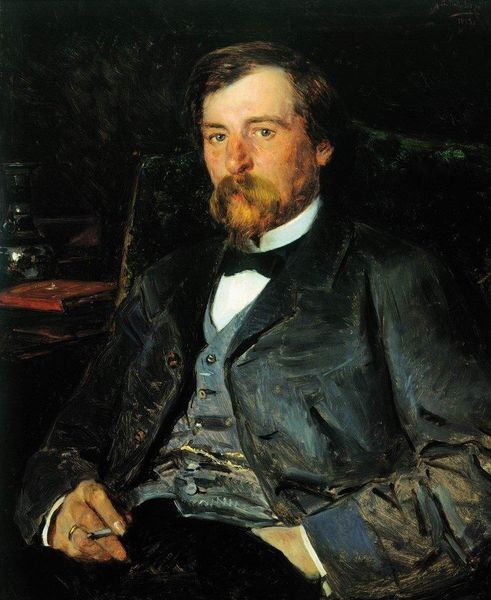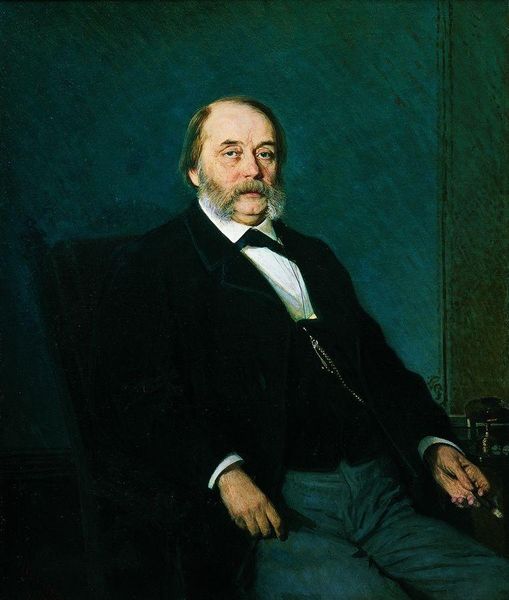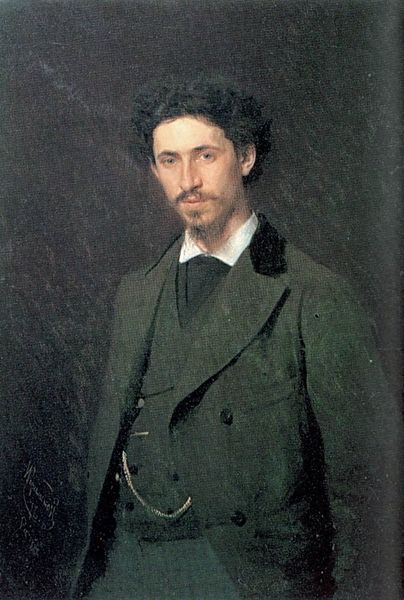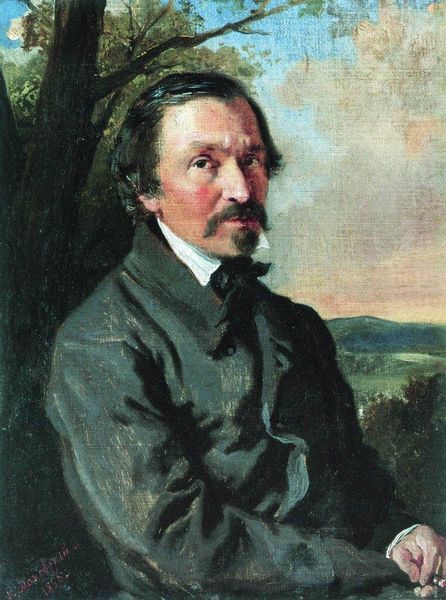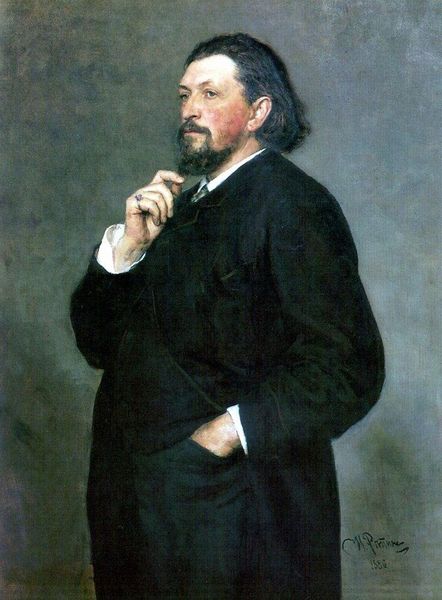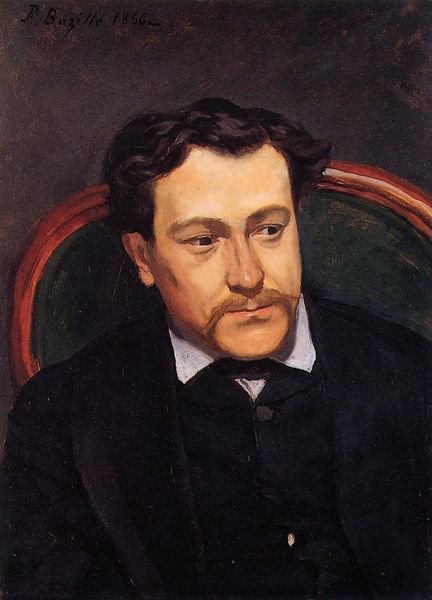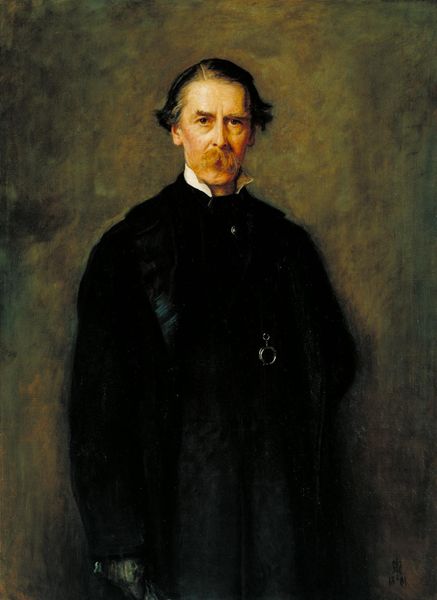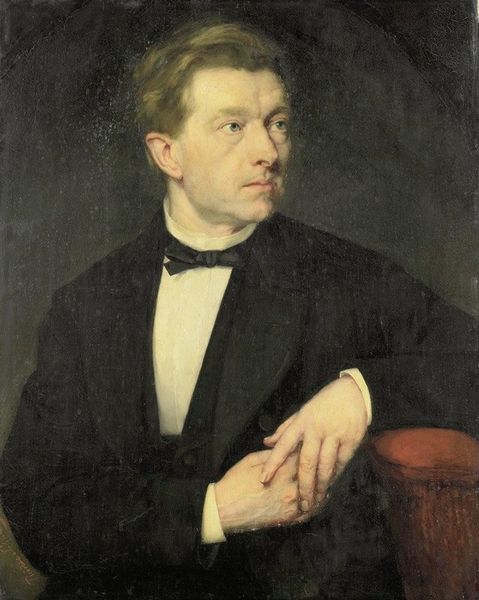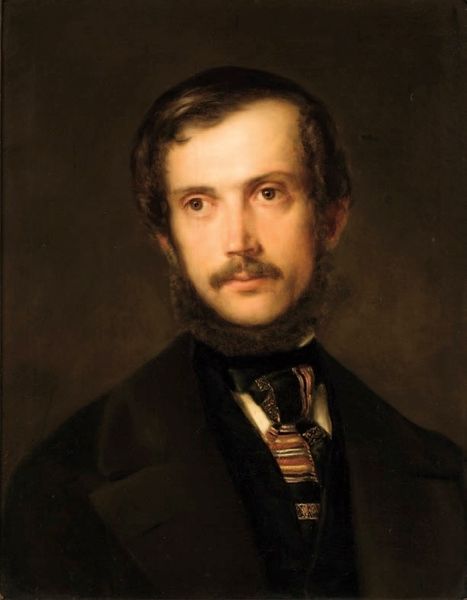
Copyright: Public domain
Ivan Kramskoy painted this portrait of Mikhail Borisovich Tulinova, a fellow artist, sometime in the second half of the 19th century. Kramskoy was a leading figure in the Russian realist movement, which sought to portray everyday life and social issues in art. The image constructs meaning through its straightforward depiction of Tulinova, emphasizing his individuality and profession. Made in Russia, it reflects a cultural context where art served as a means of social commentary and national identity formation. Kramskoy, along with other artists, challenged the established academic art institutions, advocating for artistic freedom and social relevance. This portrait embodies the progressive ideals of the time, rejecting idealized or romanticized representations in favor of a more authentic portrayal. To truly appreciate the painting, delving into archives, letters, and manifestos from that period would give us a sense of the artistic and intellectual debates shaping Russian society. Art, ultimately, gains significance through the unique social and institutional settings that formed it.
Comments
No comments
Be the first to comment and join the conversation on the ultimate creative platform.
